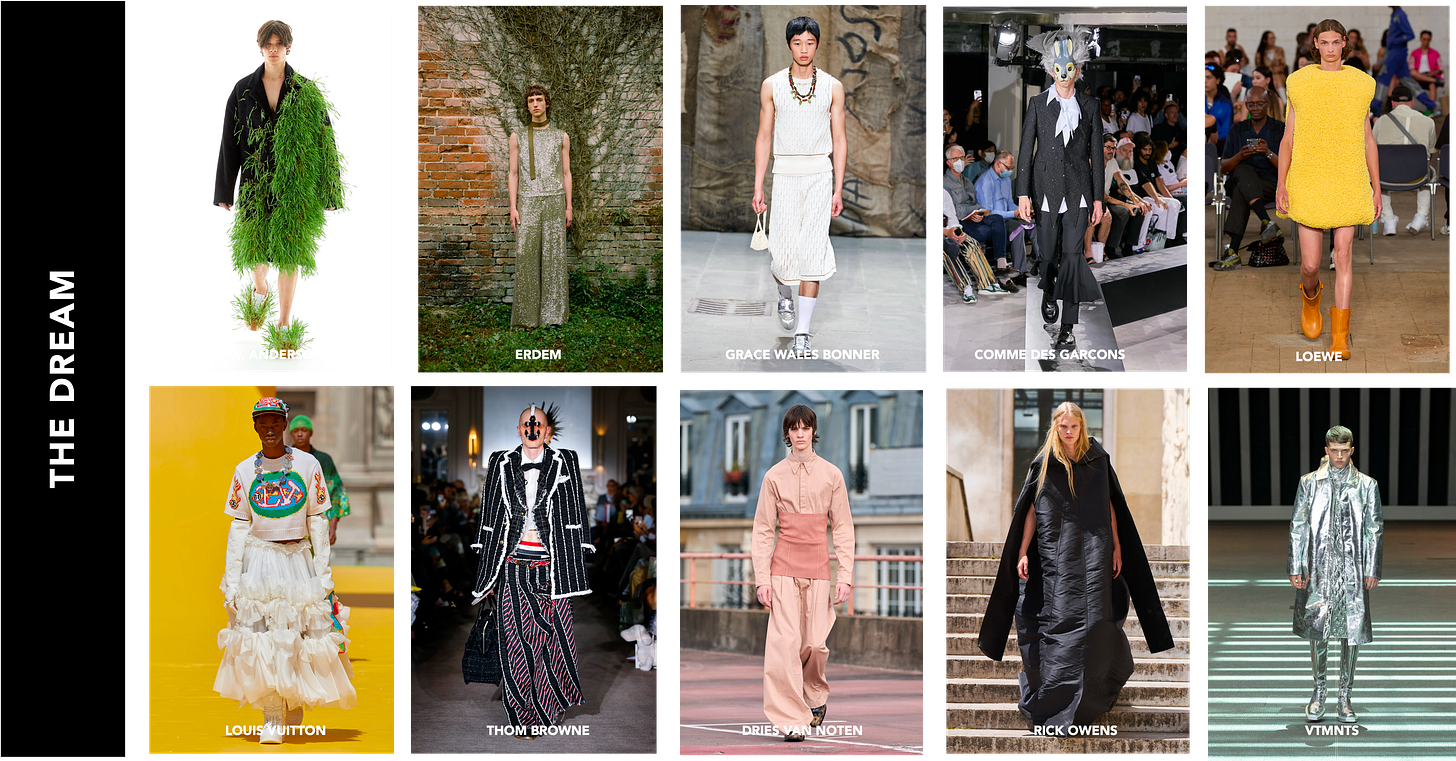Welcome to the Sociology of Business. The Sociology of Business offers a paid membership program. Paid options are for the members of this community who want to be the first to access everything from Web3 brand-building to the new business models and emerging creative formats. Since its inception, the Sociology of Business has been the source code for many other analyses, strategies and brand-building approaches. Members will now have the front-row seat. If you are not yet subscribed, join the community by subscribing below and joining the Sociology of Business Discord. You can find my book, The Business of Aspiration on Amazon and you can find me on Instagram and Twitter. For those new here, in my last analysis, I explored different product strategies in the current menswear landscape.
In the first part of the Menswear OS analysis, I looked into three models (the Dream, the Trend, and the Lifestyle) pursued by menswear brands. In this follow-up, I look into the specific growth trajectories of these three models and the corresponding value architectures. Knowing the strengths and benefits of each model helps menswear brands create a coherent strategy and a considered growth investments.
The Dream growth model pursues a focused product strategy, revolving around collectibles, made-to-measure and the main collection that delivers the creative vision. Distribution is limited and the brand model is Diamond, with consistent quality but differing degrees of creativity and craftsmanship. Creative strategy is laser-focused on the product, which is the primary way to convey the brand vision. Creative product innovation is critical for protecting price and market share and for providing brand differentiation. These brands create classics of tomorrow, not the hits of today. Market growth is primarily measured in value, not volume.
Two key features of the Dream model are:
Awareness over accessibility. Loewe, Thom Browne, Junya Watanabe, Comme des Garçons or VTMNTS create fans before they create customers. These brands are widely beyond their core target, through their singular product aesthetics. In traditional menswear marketing, communication is obsessively focused on the current and potential customers, and any media spend beyond that is considered a waste. In contrast, Thom Browne or Loewe presentations build a cultural link: these brands establish themselves as a social indicators (Junya Watanabe), a symbol of good taste (Erdem), a creative savvy (Thom Browne), or originality (Loewe). Thom Browne looks do not sell products, but makes those who have them happy that others know what wearing Thom Browne means. In today’s expanding menswear universe, brands have to reach beyond their actual targets and build strong familiarity with those who do not own or consider the brand yet.
Identity over positioning. Comme des Garçons, Rick Owens or J.W. Anderson focus on building their own creative identity versus comparing themselves to others. They operate according to the economics of singularities and grow by gradually building their own incomparability. This approach ensures both high differentiation and high durability, and there are two reasons behind it. These brands see their role as transmitters of future’s tastes and trends, and not as followers of existing tastes and trends. Second, they play an important role in developing and expressing consumers’ identities. They sell style, original creation, and singular passion of the owner or a creator (Virgil Abloh’s Louis Vuitton, Rei Kawakubo, or Dries Van Noten all have strong stylistic identities). They are a cultural magnifying glass for reading the world.
The rest of this analysis is for paid subscribers. Choose one of the paid subscription options to access.
Keep reading with a 7-day free trial
Subscribe to The Sociology of Business to keep reading this post and get 7 days of free access to the full post archives.







